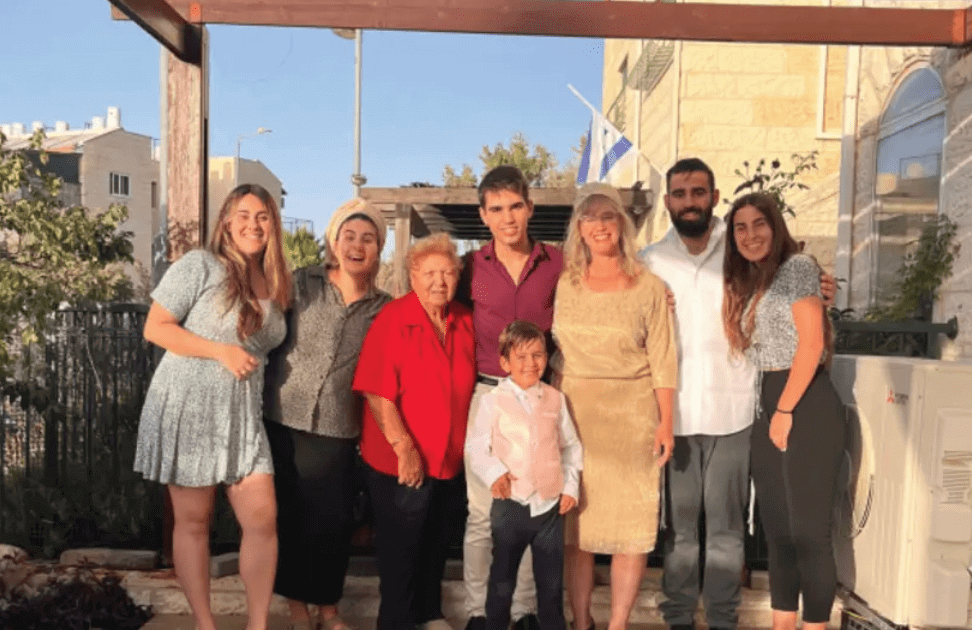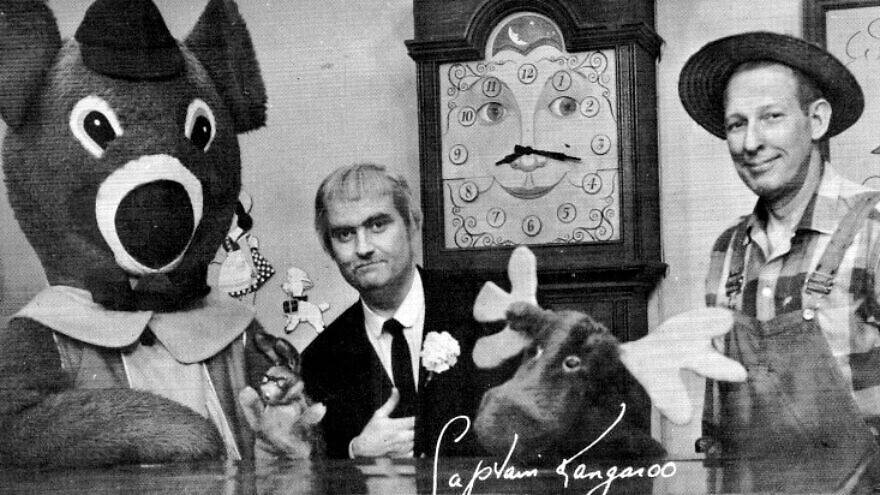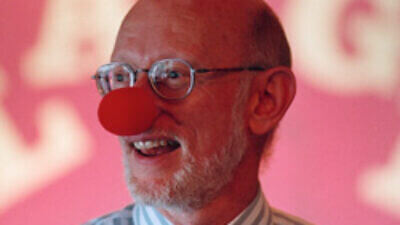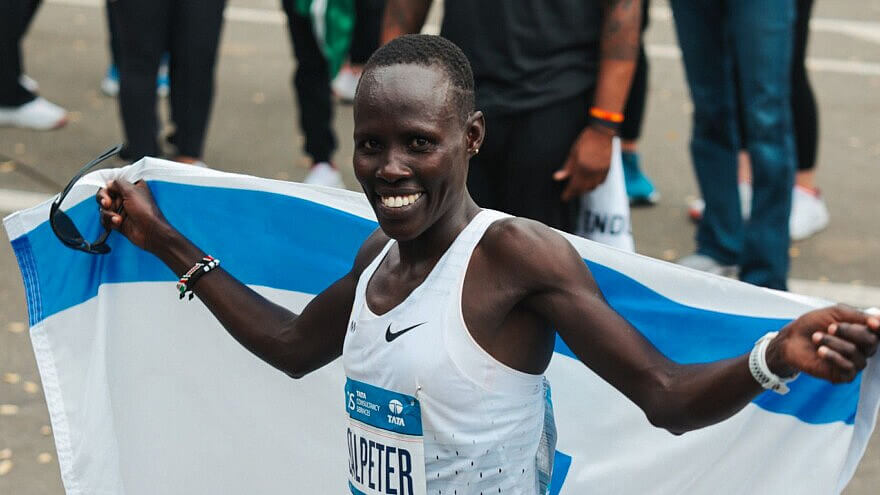Original Article Published On The Jerusalem Post
Frankie McLean, who for decades has been known as Sarit Edri, recently shared her incredible and impressive journey to Judaism and Israel. Now she’s returned to soccer.
When Sarah Frances (“Franki”) McLean left Washington State in 1991 for a year of study at the Hebrew University of Jerusalem, the Catholic-born, evangelical, Baptist-raised, blonde-haired college soccer player had one goal – to master the Hebrew language.
“I was Bible-believing but examining the differences between how I was raised and what I believed,” recounts McLean.
“The best way to know God’s message was to read the Bible in the original.”
“I was Bible-believing but examining the differences between how I was raised and what I believed. The best way to know God’s message was to read the Bible in the original.”Sarit Edri
During her year in Israel, McLean learned Hebrew. She also met Shimon Edri, an Israeli man from Bat Yam, who would eventually become her husband.
Frankie McLean, who for decades has been known as Sarit Edri, recently shared her incredible and impressive journey to Judaism and Israel. Now 52, she is a religious Jewish mother of six (children range in age from 5 to 26), a licensed tour guide, and a longtime resident of Efrat.

In recent years, Edri has returned to her soccer roots. She is a soccer coach and pioneer in creating soccer playing opportunities for girls ages 5-13, as well as women. Edri founded the Matnas of Efrat in 2010, and last year she established Efrat Kadoorregel Moadon.
Programs range from non-competitive classes to teams, which participate in the IFA, the Israel Football Association.
Edri’s 19-year-old daughter, Kerenor, has been playing soccer since age eight and is a professional soccer player on the Israel National Women’s Team.
The start of an Israel journey
Edri’s Israel journey started when she came on a Hebrew University one year program at age 21. “I was a senior in college, and most were juniors. I stood out a bit, as I was one of the only non-Jews.” Edri notes that the program started just after the Gulf War. “It had disrupted everyone’s plans.”
Fortunately for Edri, the Gulf War played a part in her meeting her future husband. “The war disrupted Shimon’s plans. He was post-army and four years older than me. He was working and was quite mature. He came to summer school at Hebrew U and was there when we arrived.”
The two quickly began to take an interest in each other. One day he remarked, “If you were Jewish, I would marry you!” Edri adds, “He didn’t give up. After I finished Hebrew U and graduated college and got a job in Washington State, he wrote me snail mail constantly and came to visit. He was clear about his intentions – but only if I was Jewish.”
Sarit and Shimon came from very different backgrounds. Sarit grew up in a small town on Fidalgo Island in Washington State, on the US West Coast. “My family was Catholic, and they became evangelicals.” Edri notes that there were no Jews in her town and that the “only way to relate to the People of the Book was from ‘the Book.’ She reiterates, “I figured the best way to know God’s message was to read the Bible in its original.”
When Edri arrived at the all-women’s Wellesley College in Massachusetts to play soccer, she continued her Bible studies. “It was not the Bible classes I expected. It was critical thinking! It challenged my beliefs.” Edri’s freshman year friends viewed her as wholesome. She recounts, “I think my friends expected me to grow up to be a pastor’s wife or a missionary in the Midwest.”
Wellesley was also Edri’s introduction to Jewish people. “My introduction to ‘real Jews’ started in the college dorms.
There were three or four Jews or halfJews in the dorms, and it was fascinating for me. They were not the Jews I had pictured from my Bible reading days. ”
She began befriending Jews on campus, taking Jewish studies classes (she was one of the first graduates of the Jewish Studies program) and visiting the recently opened kosher cafeteria on campus.
She also began to face her own crisis of faith. “It led me to critically examine the basis of Christianity. I had to examine my own faith. The foundations of Christianity for me were shaken. And I had to examine Judaism. I was looking for something that made sense to me.”
“It led me to critically examine the basis of Christianity. I had to examine my own faith. The foundations of Christianity for me were shaken. And I had to examine Judaism. I was looking for something that made sense to me.”Sarit Edri
Ultimately, Edri decided she wanted to convert to Judaism. And she is very clear about her motivation: “I didn’t do it for Shimon,” she says, clear that becoming Jewish was not for the sake of marriage alone.
EDRI RETURNED to Israel in 1993, worked as a secretary in a law firm, and began studying for conversion with an Orthodox rabbi. “I was the day secretary, and it just so happened that the night secretary was a convert from England!” Edri instantly felt a connection. “For me, it was a package – Israel, Judaism and the people.”
Edri wisely decided to hold off sharing her questions and uncertainties with her parents. “I didn’t want to speak to them about Judaism until I was really sure.”
Edri converted in November 1993 in front of a beit din (rabbinical court) in Kiryat Shmona. The beit din wanted to add a new first name and have her become Chaya Sarah. “I asked him to give Chaya as a second name so I could become Sarah Chaya,” Edri recounts. She soon after became Sarit, as there were many Sarahs already in Shimon’s family. Every year when the Torah portion of Chayei Sarah (“the life of Sarah, the 5th portion in the book of Genesis) is read in synagogues worldwide, the Edris spend that Shabbat in Hebron, the burial place of Sarah and most of the patriarchs and matriarchs.
“It is like a birthday for me,” she says.
Sarit and Shimon got married in the US in January 1994 and had a “big fat wedding” in Israel eight months later.
“I wore my wedding dress three times,” she laughs.
The Edris lived in Seattle, among the Turkish Sephardi Jewish community after they got married. Shimon had difficulties finding work in his field of banking, and the two decided to return to Israel. Sarit officially made aliyah on August 8, 1994.
One week later, on August 17, we had a 350-person wedding in Bat Yam – all done by Shimon’s family!”
Edri praises her parents for their love, support and kindness. “I can’t express enough how they raised me. They chose shalom bayit [peace in the home], which is more important than anything else. I know it was heartbreaking for my mother and father, and I told them after I converted. My father said, ‘If I know you are searching and always seeking God’s will, I can’t ask for more than that. If you are searching and becoming close to God, I am happy.’” She adds, “They also loved my husband!”
The Edris and McLeans have visited and gotten to know each other well over the years – despite religious, cultural and language differences.
As Edri looks back on the conversion and aliyah process, she concedes, perhaps a bit reluctantly, “I was naïve then. I was in the clouds.” But her love for Judaism and Israel and her exceptionally positive outlook remain until today. “I always want to see the beautiful, the exotic, the hopes, the rosy future, the nisim (miracles) –that’s what I’ve always seen and continue to see, even when there is traffic and rude people. Those things don’t penetrate me.” She adds, “The best time to come on aliyah is when you have nothing. At 21, I had nothing.”
The Edris’ married Israel journey started in Jerusalem. Shimon worked in banking, and Sarit completed the tour guide course. “After four years, we needed a cheaper place to live.” They joined a community in Tekoa, which consisted of 30 trailers. “Living there changes you. When you live close to the land in a more communal way, it makes you feel more connected to Israel and community,” she says.
This experience also helped Edri’s Hebrew. “My klita [absorption] was atypical of most Americas. I married an Israeli whose family spoke no English, so I had to speak Hebrew to survive.”
She adds, “I knew I had arrived when people spoke to me in Hebrew and I answered in Hebrew.” Since 2001, the Edris have lived in Efrat.
Sarit and Shimon are proud of their six children, who range from professional soccer player to Bratislaver Chasid. The ever-positive Edri encourages olim to “find your passion and follow it.” She is pleased that at age 52 and after almost 30 years in Israel, she has not had to give up her two passions – Israel and soccer.




